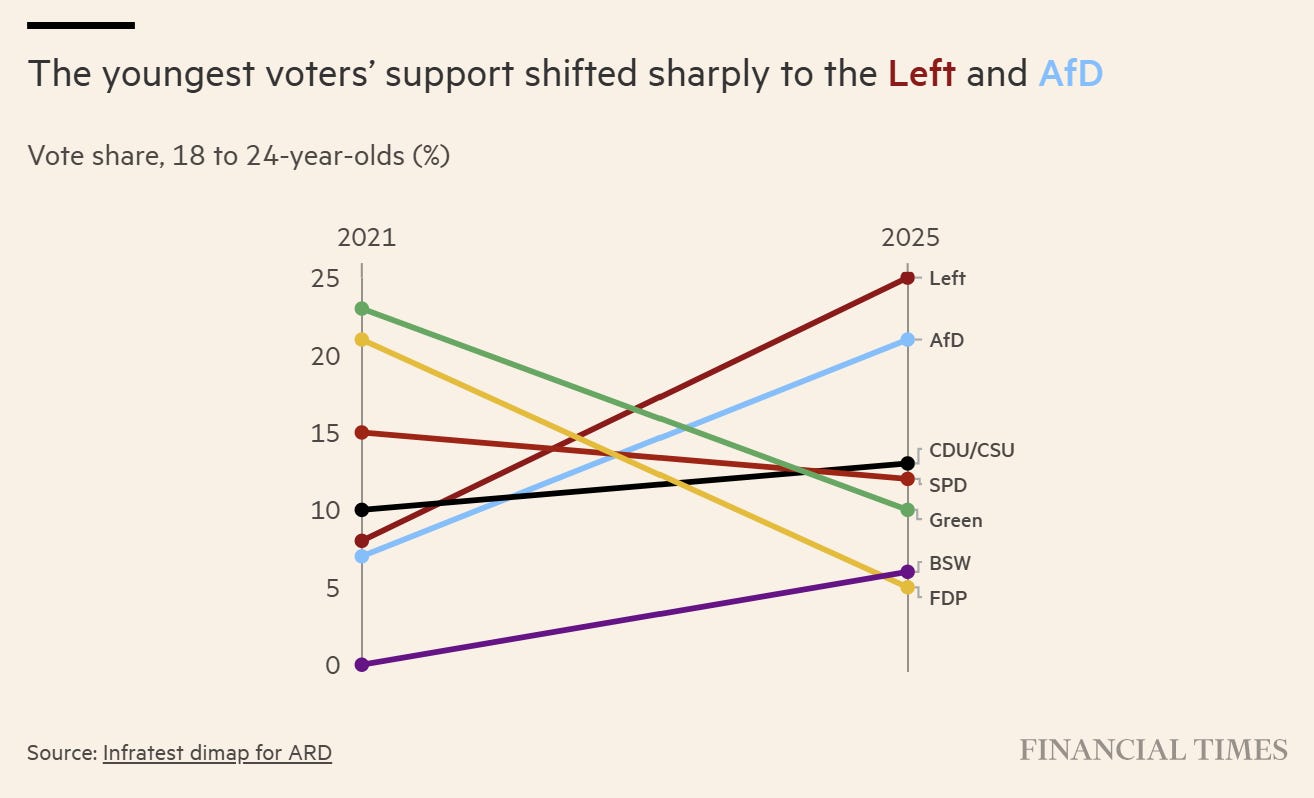Young Americans are among the most stressed and distrustful youth in the developed world. A whopping two-thirds say they have no trust in the government.
A recent Economist article argues that some indicators of youth unhappiness are finally easing. Reported feelings of depression and sadness have declined from their pandemic-era peaks. And the suicide rate for 18- to 25-year-olds (16.1 per 100k) has dropped to its lowest level in several years. (These are the same indicators that were cited by former Surgeon General Vivek Murthy in his 2022 public health advisory on youth mental illness. See “New Public Health Advisory on Teen Mental Health.”)

But let’s not get carried away. Compared to youth in most other high-income countries, youth in America continue to outpace their peers in distress across most indexes. A recent Financial Times analysis of 2023–2024 Gallup data reveals that young Americans remain among the most pessimistic among OECD countries. The numbers largely speak for themselves—so let’s dive in.
Young Americans (ages 15–29) express strikingly low confidence in national institutions. Two-thirds (66%) say they have no trust in their national government—16 percentage points above the OECD average (50%). This places the U.S. among the top three most distrustful countries surveyed, alongside Greece and Italy, which consistently rank high in youth negativity.

The survey also found that young Americans feel pessimistic about their personal lives. 31% of under-30s also say they no longer feel free to make meaningful life choices—the highest ever recorded by Gallup in the U.S., and again, worse than nearly every other advanced economy.
What’s more, 61% of American youths say they experienced stress the day before the survey was conducted. That’s +16 percentage points above the OECD average. On the stress scale, the U.S. is only behind Canada (62%) and Greece (65%).

It’s no surprise that young Americans rank so poorly. We have written several NewsWires on young people’s deep dissatisfaction with government and worsening mental health. (See “Demography Roundup #6” and “The Rise of Young Independents.”)
But it’s also worth noting that youth dissatisfaction is relatively widespread among OECD nations. (See “Global Millennials: Down on Democracy and Drawn to Populism.”) I suspect this pessimism is helping to fuel the rise of populism in Europe. In the recent German elections, the two most popular parties among 18- to 24-year-olds were the far-left Die Linke (25%) and the alt-right AfD (21%). Young people want change—and are voting for the most radical parties.





Such an important topic. TY for the statistical findings. GFC, Covid, Loneliness Epidemic… not an easy period to become an adult.